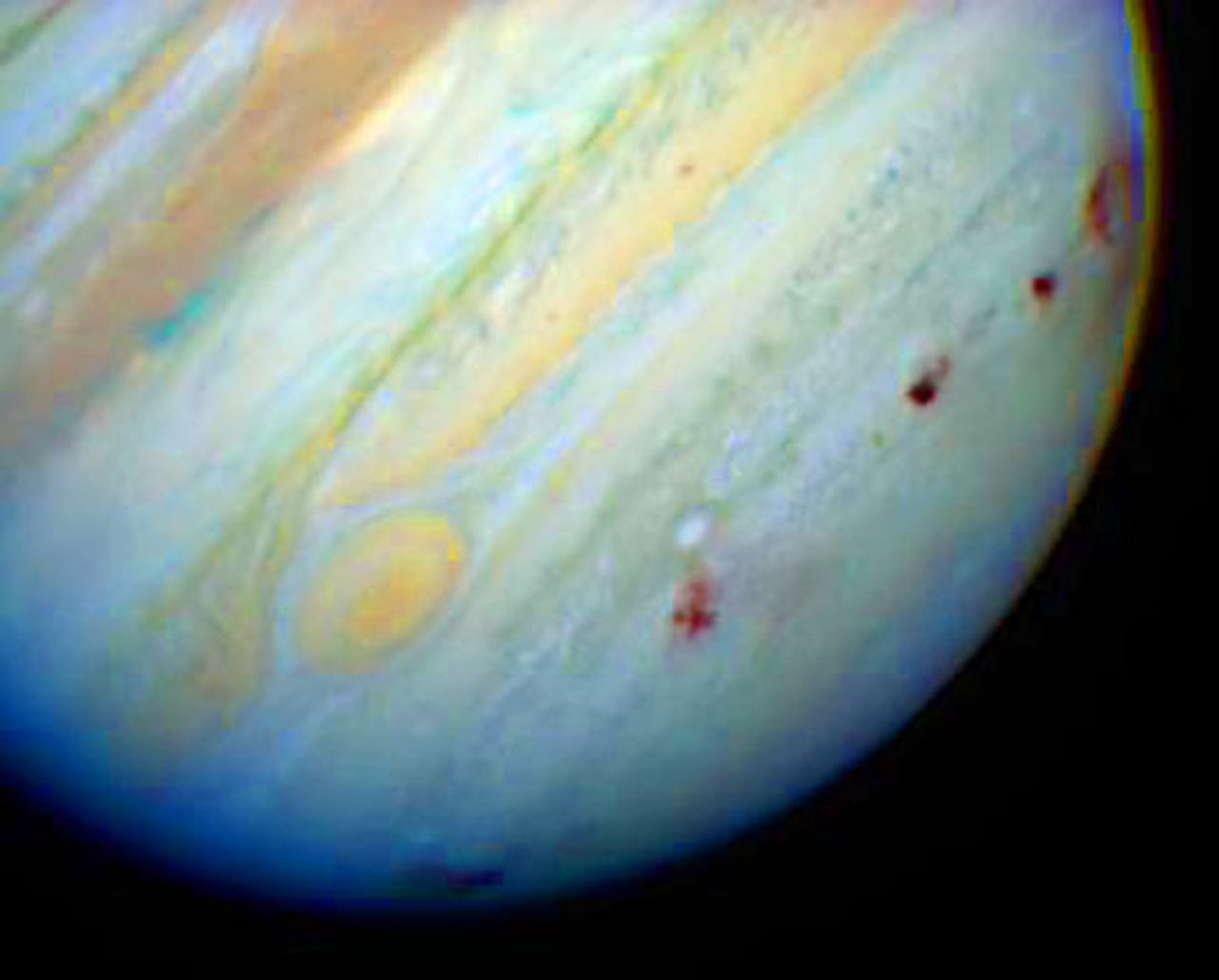Images: NASA celebrates Hubble's sweet 16

Messier 82
This image, of Messier 82, is the sharpest wide-angle view ever obtained of the starburst galaxy. New stars are born in M82 10 times faster than they are inside in the Milky Way Galaxy, but this rapid rate of star formation will eventually be self-limiting. When star formation becomes too vigorous, it will destroy the material needed to make more stars.
M82 composite
This image is a composite of images taken from the Hubble Space Telescope, Chandra X-Ray Observatory and Spitzer Space Telescope. X-ray data recorded by Chandra appears in blue, infrared light recorded by Spitzer appears in red, and Hubble's observation of hydrogen emission appears in orange.

Shoemaker-Levy Comet
On July 24, 1994, the Hubble grabbed headlines with spectacular pictures of the Comet Shoemaker-Levy breaking up and then crashing into Jupiter. There are actually eight different crash sites in this photo.
Neptune
It's springtime on Neptune.
Jupiter moon shadows
A solar eclipse is rare on Earth, but this photo shows three occurring at the same time on Jupiter. In this Hubble image, three of Jupiter's 16 confirmed moons cast shadows that create black spots. From left to right, they are cast by Ganymede, Io and Callisto. Two of the moons are also visible in this image. Io is the white spot toward the center of the planet; Ganymede is the blue spot in the upper right. Callisto is outside the frame.
Hubble repairs
Probably the most spectacular missions of the U.S. space shuttle program involved repairing the Hubble Space Telescope. Launched into orbit in 1990, the Hubble was a bust due to a mirror that was out of focus.